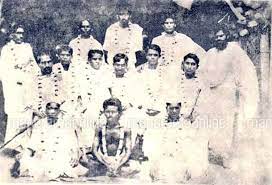Vaikom Satyagraha was a nonviolent agitation in Kerala, India, that took place from 1924 to 1925. It was led by social reformers like K. Kelappan, T. K. Madhavan, and others, with the support of Mahatma Gandhi.

The agitation was primarily aimed at securing the rights of the so-called “untouchables” to use the roads around the Vaikom Mahadeva Temple in Kerala. The temple was known for its strict caste-based hierarchy, which prevented the “lower castes” from accessing the temple and its surroundings.
The satyagraha involved various peaceful protests, marches, and demonstrations. The protestors faced severe opposition from the local authorities and the upper-caste community, including police brutality and arrests.
Eventually, the movement succeeded in its objective, with the government issuing a proclamation on November 12, 1925, allowing people of all castes to use the roads surrounding the temple. The Vaikom Satyagraha became a significant milestone in the struggle against caste-based discrimination in India and inspired many other similar movements across the country.
Important Links